Is it fried grass or lawn disease? Here's how to tell the difference
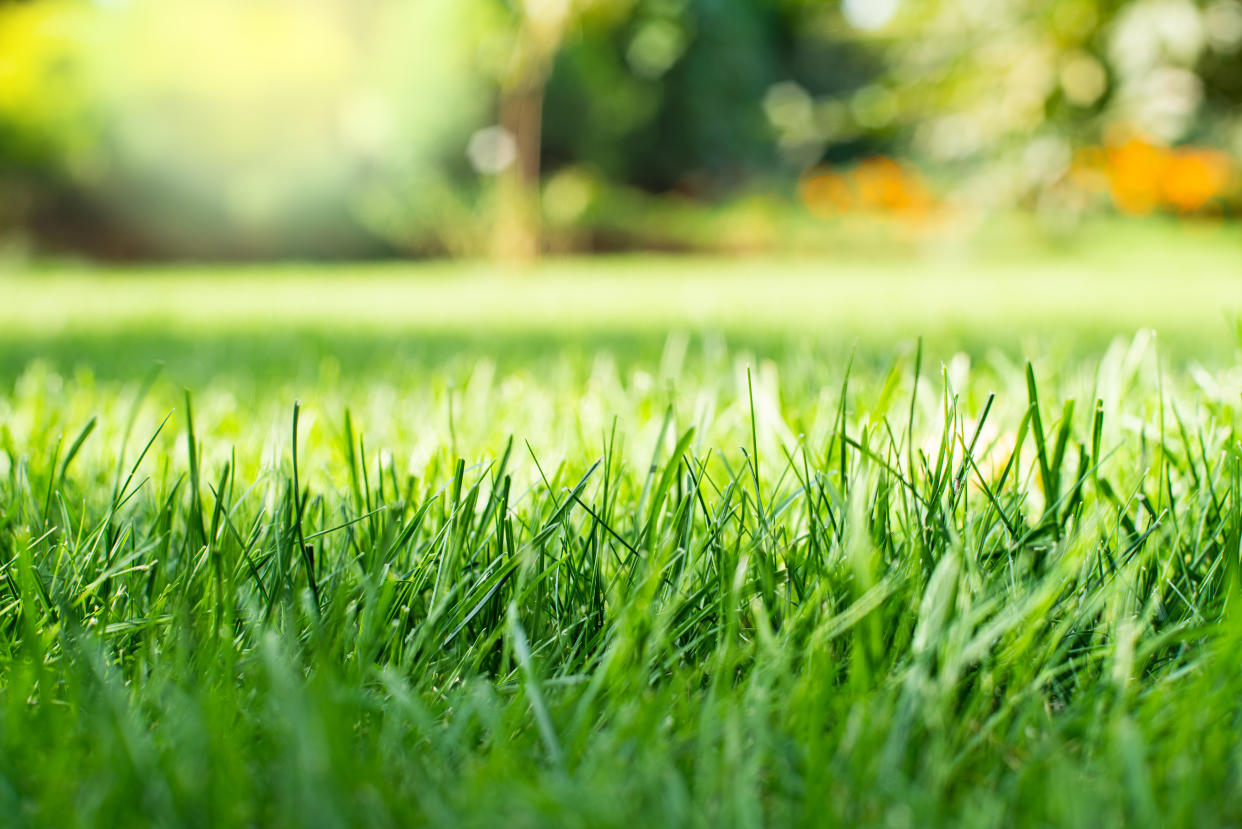
This was the summer of scorched Earth. The U.S. was hit with brutal heat waves that shattered records, practically melted us all and certainly did a number on our lawns. No matter how carefully you tended to your backyard, you're probably faced with fried grass now. To add insult to injury, certain types of lawn disease look exactly like grass burned by extreme temperatures.
So, do you have fried grass or is it lawn disease after all? Here's a handy guide for diagnosing burnt blades versus three of the most common fungi —and figuring out the best path forward.
Fried grass
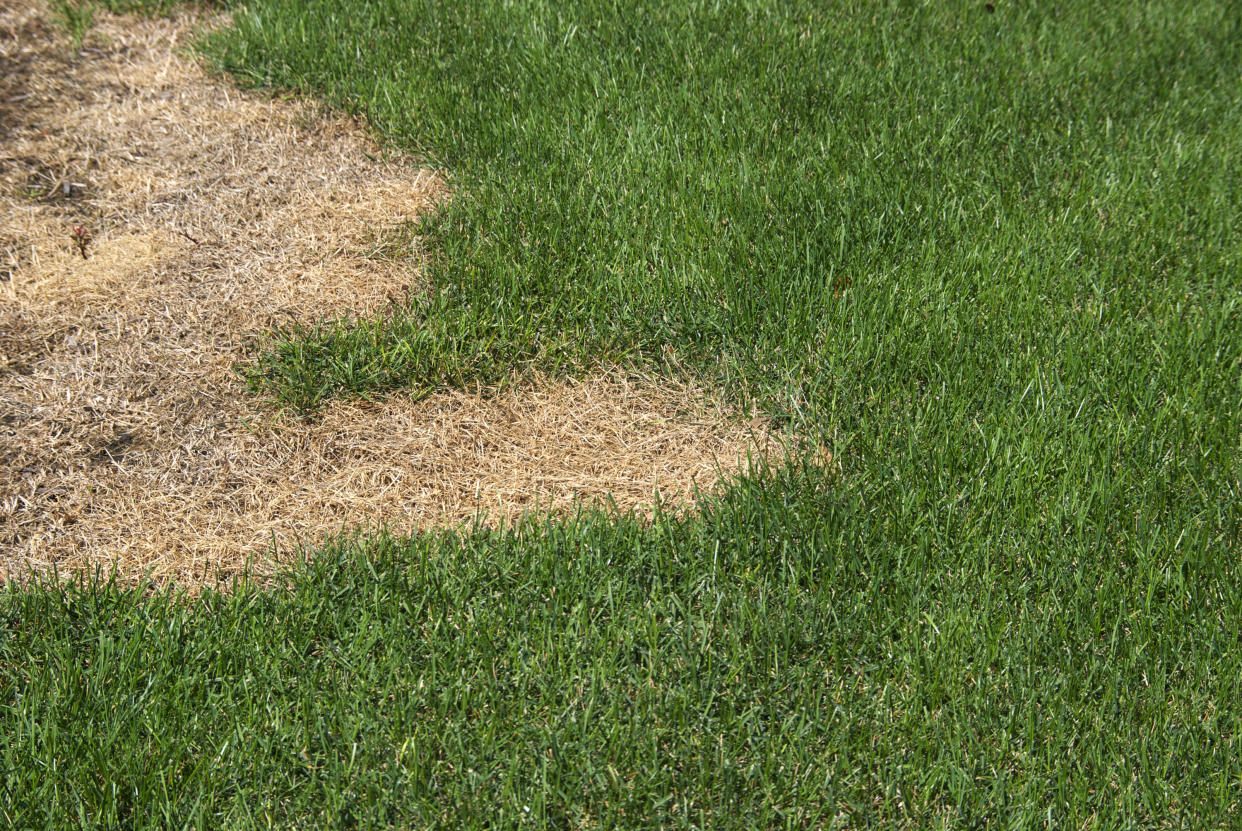
What it looks like: Straw-like patches and strips of of tan or brown grass that show up fast are usually tell-tale signs that your lawn is quite simply burned. This can be from direct, prolonged exposure to the blazing sun, but it can also be the result of dog urine or chemicals such as weed killer — or a combination of all of the above.
How to treat it: Once grass is completely burned — and not just the tips — it's dead and won't come back to life. But there are ways to restore a partially burnt lawn to its verdant glory again. The first step is removing the fried parts, whether that means mowing the tips off or uprooting the patches of dead grass. If the grass is partially fried, you can try heavy, deep waterings at a time of day when the sun is not strong, and the water has a chance to penetrate to the roots. Otherwise, removing the patches and reseeding is the solution.
Brown patch
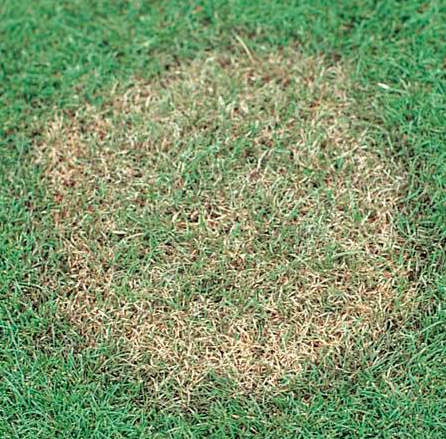
What it looks like: Brown patch is a common lawn disease that comes on fast and is more likely to develop in hot and humid climates — two factors that make it easy to confuse with burnt grass. But instead of totally burnt patches and strips, this fungal infection appears as big, sunken circles that are usually outlined in dry, brownish-yellow grass with greener blades on the inside.
How to treat it: Since the brown patch is humidity-based, aeration and dethatching are key to eradicating it. These increase air circulation and dry out the fungus, but they also may simply send the fungus into dormancy for the winter. It's best to consult a professional to properly treat brown patches.
Dollar Spot
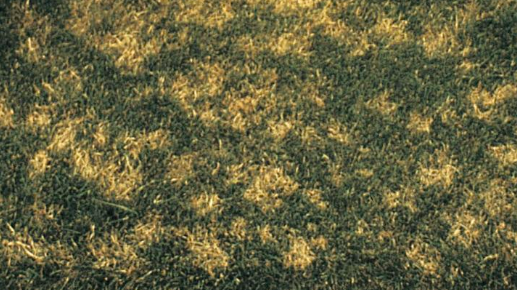
What it looks like: Dollar spot is another common lawn fungus that mimics burnt grass, but it also resembles brown patch, so it's doubly confusing. Dollar spot can be identified by the shape of the crunchy, dry circles that appear on your lawn: they're smaller and resemble silver dollars — that explains the name. The circles are brown and straw-like, and they usually continue to grow larger if they're not addressed.
How to treat it: Dollar spot also appears when humidity is high. The lawn disease is known to be resistant to fungicides, so aerating and thatching are important here too. Improving drainage with compost and keeping the lawn irrigated but not over-watered are also key. Again, a lawn pro will help make sure this fungus goes away for good.
Red Thread
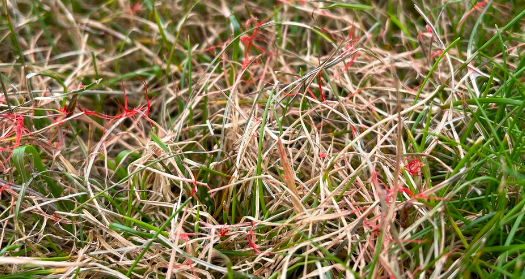
What it looks like: This lawn fungus is a little easier to identify, as it shows up as dry, reddish patches with reddish-pink threads that tie it all together. Cool-season grasses are most vulnerable to this disease.
How to treat it: High humidity and poor air circulation provide a breeding ground for red thread, so aerating and dethatching are the best course of action here too. Removing wet fall leaves is also important. Red thread does not completely kill grass like other lawn funguses can; rather, it infects it, making it appear dead. Treatment involves using nitrogen-rich fertilizer to nourish new growth, but make sure to keep it up: it can take years to banish the fungus completely and prevent it from coming back.
